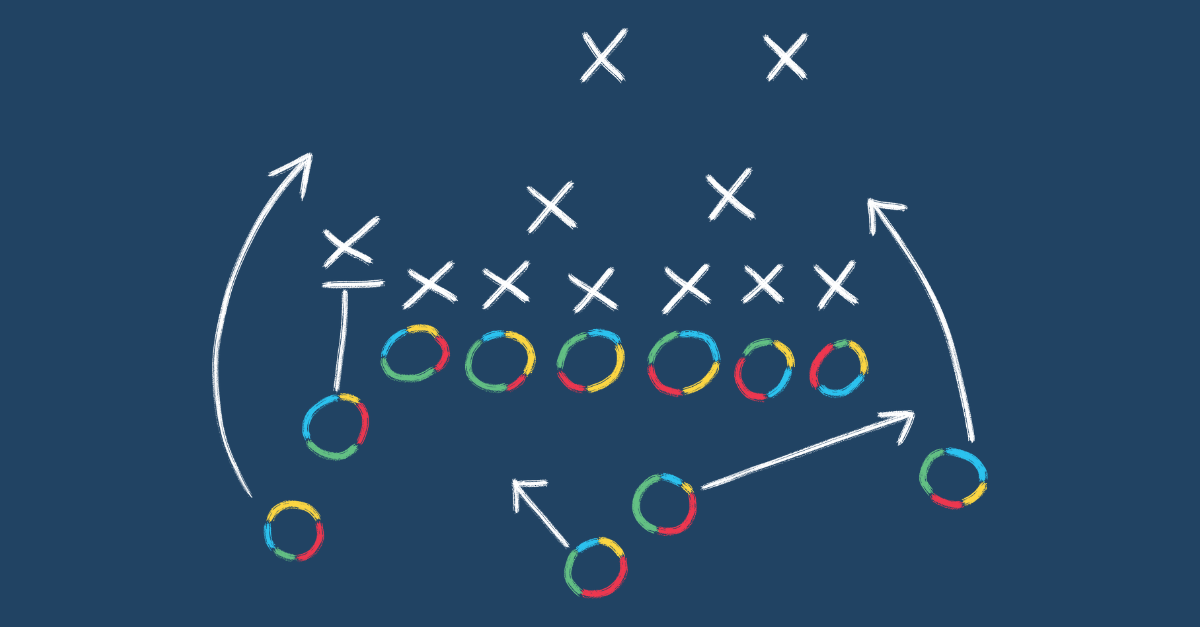“Quiet quitting” might have started as a TikTok trend, but it’s become a major retention concern in recent years. Not only did millions of employees quit boldly during the Great Resignation, but now many are checking out without actually leaving.
Defining quiet quitting can be difficult, and social media’s definition isn’t the only way to think about this phenomenon. But the risks are real: Gallup estimates that half of American workers are quiet quitting. This is discouraging because tens of millions of people are psychologically disconnected from their jobs. But there’s hope because these workers aren’t (yet) actively disengaged.
Meanwhile, whether you believe surveys that say people quit jobs because of their bosses or because of executive leadership, the solution is the same: better-engaged leaders who invest in their people. The good news is that leaders have a powerful approach for engaging would-be quiet quitters: performance management.
Much of this work will fall to managers of teams. Learn more about what quiet quitting means, why it’s bad for your workforce, and how performance management can help you reengage your people. Plus, we’ll show you how Whole Brain® Thinking can make these efforts even more successful by tapping into your team’s cognitive preferences.
What Is Quiet Quitting, and What Causes It?
Quiet quitting refers to employees who put in the bare minimum required to keep their jobs but nothing more. They’re checked out — lacking enthusiasm, initiative, and engagement for their work and even for their co-workers. While these employees are present during working hours and do what’s asked in their job description, they fail to reach their potential.
They often exhibit behaviors that indicate their dissatisfaction with the work environment. One such behavior is a reluctance to speak up in meetings or share ideas. These employees may remain silent, avoiding active participation in discussions or projects. They also refrain from volunteering for additional tasks or responsibilities, showing a lack of interest in taking on new challenges or going the extra mile. Quiet quitters might refuse to work overtime, even in roles where that’s occasionally expected to meet deadlines or handle unexpected workloads.
What causes quiet quitting can be in the eye of the beholder, however. Some executives might think employees are quiet quitting simply because they set reasonable boundaries. A SHRM analysis suggests that companies pushing mandatory return-to-office policies in 2022 sparked early "quiet quitting," as seen by reduced productivty. Gallup, meanwhile, points to poorly managed hybrid environments and younger workers who feel abandoned, among other factors.
The causes of quiet quitting are multifaceted and vary by individual, but common factors include a lack of motivation, disengagement, and poor management. Quiet quitting might also be a response to stress or burnout, as employees pull back as a coping mechanism.
When employees feel uninspired by or disconnected from their work, they may become disillusioned or complacent. The result is that performance suffers, whether by declining or by plateauing. This lack of motivation has many causes, including a lack of recognition or rewards and a lack of alignment with organizational values and goals.
Limited growth opportunities also can discourage these workers and provoke quiet quitting. If people feel like nothing they do matters, they’ll simply do the minimum needed to avoid attention. Other workers might adopt quiet quitting practices because of a mismatch between their current skills and job responsibilities. Rather than continue struggling without the support they need, they simply do what they can and stop there.
Poor management practices and company culture can also contribute to quiet quitting. When employees don't receive clear expectations, feedback, or support from their managers, they may feel uncertain or anxious about their roles and responsibilities. Inadequate communication or a lack of recognition can make employees feel undervalued and disengaged, and they might pull back from taking the initiative.
Meanwhile, employees who are micromanaged or disrespected by their manager or leadership might quiet quit as they search for the next opportunity.
.png?width=1200&height=627&name=Herrmann-InternalImage-4%20Negative%20Consequences%20of%20Quiet%20Quitting%20%20(1).png)
The Negative Workplace Consequences of Quiet Quitting
Quiet quitting has negative consequences for workers, teams, and organizations. These downsides affect productivity, team morale, collaboration, and even the organization's financial prospects.
When employees only meet the minimum requirements of their roles, tasks get completed, but quality, efficiency, and timeliness may suffer. The lack of employee initiative and engagement can lead to missed opportunities, delayed projects, and a general decrease in overall productivity. As a result, the organization may struggle to meet deadlines, deliver high-quality products or services, and maintain competitiveness.
Quiet quitting also can harm team morale and collaboration. When some team members consistently exhibit disengagement and minimal effort, that sense of apathy and frustration can spread among their colleagues. Collaboration often suffers, as quiet quitters are less likely to offer their teammates their insights, ideas, or support. This can hurt trust — at worst, it can cause a doom loop for collaboration, camaraderie, and morale.
If enough people in your workforce are actively disengaged, your company could suffer financially. Customers may notice the lack of enthusiasm or effort as they experience a decline in service. This can result in decreased customer retention, negative word of mouth, and lost revenue. Additionally, the costs associated with rework, errors, and inefficiencies can add up over time.
Quiet quitting isn’t necessarily good for employees, either. They could miss out on growth opportunities. The root causes of their disengagement likely won’t be solved, which doesn’t help their morale or ability to contribute. If their performance noticeably declines, their job could be in danger, creating all sorts of career and personal difficulties — including the ability to quickly get another job.
Because quiet quitting ultimately harms employee performance, managers need an approach that re-engages these workers and maintains their quality of work. That's where performance management can be a powerful managerial tool.
What Is Performance Management?
Performance management is a systematic process that aims to improve individual and organizational performance by setting clear expectations, providing feedback, and evaluating progress. Performance management is an ongoing process of goal-setting, tracking, feedback, and evaluation. Instead of, say, an annual review that looks backward, performance management is an active, forward-looking approach that brings managers and employees together for regular, constructive conversations.
Its purpose is to align employee goals and behaviors with the organization's overall objectives. Done well, employees improve their performance, contribute more to the organization’s priorities, and develop critical skills for their job roles and functions.
Performance management is increasingly accompanied by technology that facilitates goal-setting, progress tracking, and ongoing manager-employee conversations.
How Performance Management Can Prevent Quiet Quitting
Performance management can help employees understand why their day-to-day work matters to the organization. This process introduces transparency and open communication regarding goals, expectations, and performance conversations.
Performance management and employee retention go together; better employee management leads to better personal and organizational results, and employees are more likely to want to build their careers with their current employer.
Here are three key areas of performance management and how they help prevent quiet quitting.
Goals
Goals should provide a road map for employees as to what they should focus on and how their work serves larger strategic priorities. These goals should be specific, measurable, achievable, relevant, and time-bound (SMART). These goal-setting processes can be included as part of a professional development plan template or as a separate discussion.
When employees have clear expectations, they’re more likely to feel motivated and engaged in their work. Performance management helps managers and employees define the work’s purpose and direction, preventing the aimlessness that can eventually drive disengagement, quiet quitting, and turnover.
Feedback
By providing ongoing feedback, managers can recognize and reinforce positive behaviors while offering constructive criticism. Regular feedback conversations help employees understand how their performance aligns with expectations (and past results) while giving them time to quickly take corrective action.
Effective feedback can encourage a culture of open communication, where employees feel comfortable discussing their challenges, seeking guidance, and sharing their ideas. This continuous feedback loop helps employees stay engaged, motivated, and connected to their work — and builds trust in their relationship with their manager.
Progress Tracking and Evaluation
Performance management requires tracking progress against goals and expectations. Through formal evaluations or ongoing check-ins and conversations, managers can measure employee performance, identify progress, and step in to reverse negative trends.
Meanwhile, employees know where they stand and how they can get better. Disagreements or different interpretations can be resolved more easily, as everyone can look at the documentation and data rather than argue over subjective traits or personality differences.
These conversations give managers a chance for meaningful conversations with employees. They can get to know them better by discussing their strengths, areas for improvement, and career aspirations. This dialogue helps managers explore underlying issues contributing to low morale or disengagement. Done well, managers can help employees feel valued — and speak up about problems with work that might otherwise lead to quiet quitting
How Whole Brain® Thinking Can Reduce Quiet Quitting
Whole Brain® Thinking is a science-backed approach that recognizes and leverages the thinking preferences of individuals, teams, and organizations. It's based on the understanding that everyone has access to different thinking styles, represented by four quadrants: Analytical (Blue), Practical (Green), Relational (Red), and Experimental (Yellow).
By decoding these thinking preferences through the Herrmann Brain Dominance Instrument® (HBDI®), Whole Brain® Thinking provides a common language and framework for understanding how people think and how to work better together. This approach acknowledges that we all think differently based on many factors—our background, experiences, and preferred ways of processing information.
These thinking preferences each have value in business and in our personal lives. Whatever our preferred combination of analytical, practical, relational, and experimental, we can and do access all four dimensions in our thinking and interactions. And when we better understand our thinking preferences and those of our colleagues, we improve trust, empathy, and collaboration within teams.
Whole Brain® Thinking is a powerful tool for performance management because it helps managers recognize their employees’ unique thinking preferences and connect them to business-relevant activities that drive outcomes. Meanwhile, employees feel understood and supported in their professional development. As they pursue their personal and organizational goals, they’ll also find collaboration easier because they better understand their colleagues’ thinking preferences.
Here are a couple of examples of how Whole Brain® Thinking improves performance management and reduces quiet quitting.
Guiding a Junior Employee
As a manager in a financial services firm, one of your employees, Alex, identifies strongly on her HBDI® profile as an Analytical thinker. Many of Alex’s job duties require working with complex financial data, identifying patterns, and communicating recommendations. Recognizing Alex’s thinking preferences, you can structure goals and objectives, emphasizing data-driven objectives and quantitative deliverables.
At the same time, constructive feedback might be needed to ensure Alex also deploys other thinking preferences in her work, such as being organized and detailed (Practical), communicating so teammates without such strong data backgrounds can understand (Relational), and being open to alternative explanations for the data (Experimental).
With this approach, Alex likely will feel energized by the opportunity to put her skills to work. She’ll also feel supported by her manager and see how her goals support business outcomes. Finally, while feedback won’t always be easy to hear, Alex’s manager can help her see how applying other thinking preferences can improve the quality of her work and the quality of her relationships with co-workers.
Helping Employees Set Goals
The goal-setting process can be a powerful way to use all four quadrants of Whole Brain® Thinking — helping employees express themselves in the most natural ways while expanding their perspective.
Using Whole Brain® Thinking, start with a simple question: “What is our goal?” From there, you can conduct a short walkaround that asks four key questions, each aligning with a quadrant:
- What are we trying to achieve? (Analytical)
- How are we going to achieve it? (Practical)
- Who does it benefit and affect? (Relational)
- Why are we trying to achieve it? (Experimental)
As employees dig into each of those questions, they can clarify their goals with follow-up questions. For example, to address, “Why are we trying to achieve it?” you might also ask, “How well does it integrate with other goals?” and “What is the long-term value and impact?”
These follow-up questions help you explore the “why?” of the goal while ensuring it integrates with other organizational activities and values. If the goal doesn’t have long-term value, for instance, you might modify it or make a note to readdress and update the goal in a few weeks or months.
.png?width=1200&height=627&name=%5BHerrmann%5D%20Internal%20image-4%20Questions%20When%20Setting%20Goals%20With%20Whole%20Brain%C2%AE%20Thinking%20%20(1).png)
Engage Your People to Prevent Quiet Quitting
Your people don’t want to be disengaged or unhappy in their work. They wind up that way when they feel unvalued, neglected, or stuck. Performance management provides a structure for managers to engage with their employees, set realistic yet challenging goals, and provide a solution for how to prevent quiet quitting.
Whole Brain® Thinking is a powerful framework to support this process. By helping employees better understand their thinking and that of their colleagues, you improve their effectiveness, give them purpose, and help them see that they truly are part of a collaborative team. All of this guards against negative work conditions that lead to quiet quitting.
Download our white paper to learn how to help struggling teams that are less than the sum of their parts.


-1.png?width=1200&name=Featured_Image_How%20to%20Prevent%20Quiet%20Quitting%20With%20Performance%20Management%20(1)-1.png)









